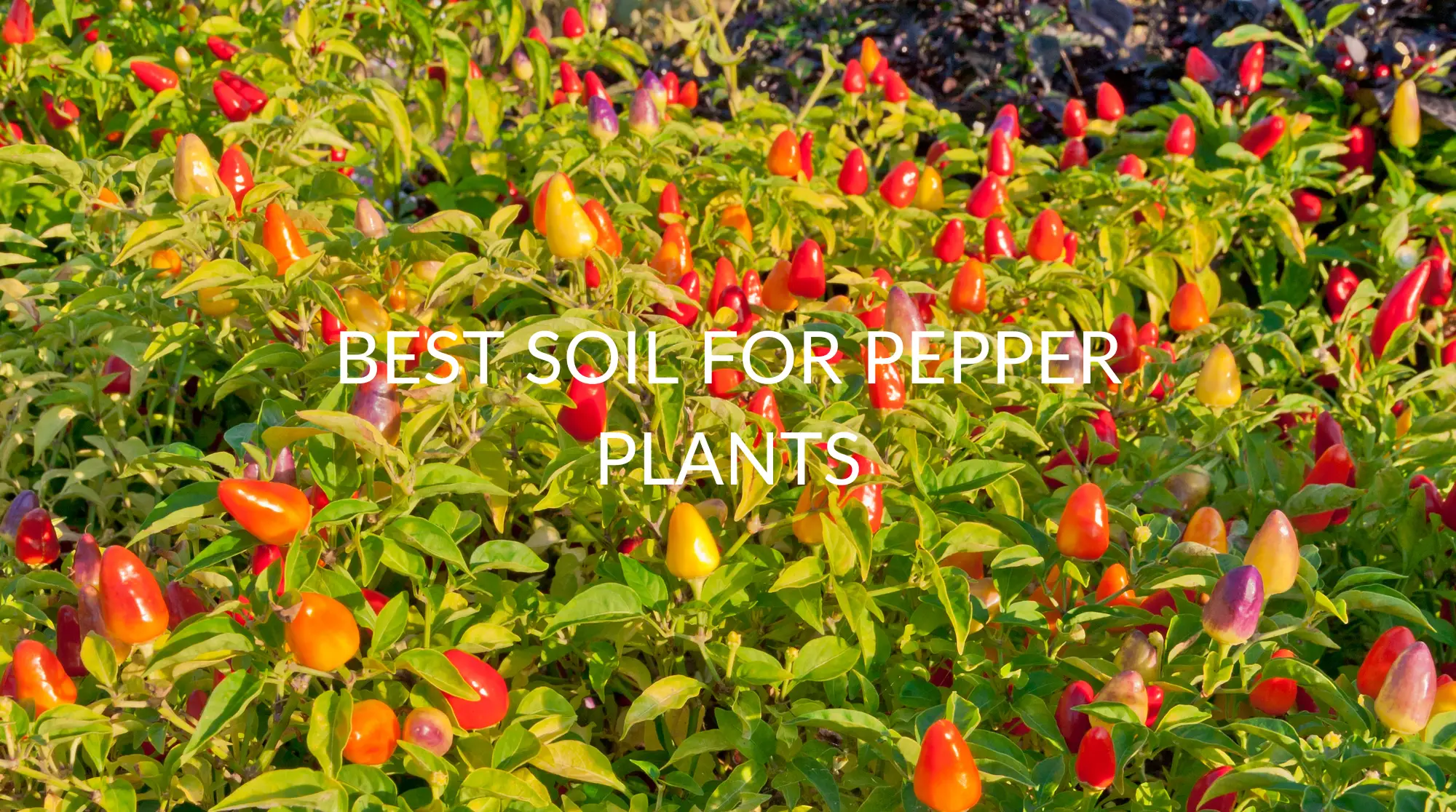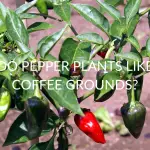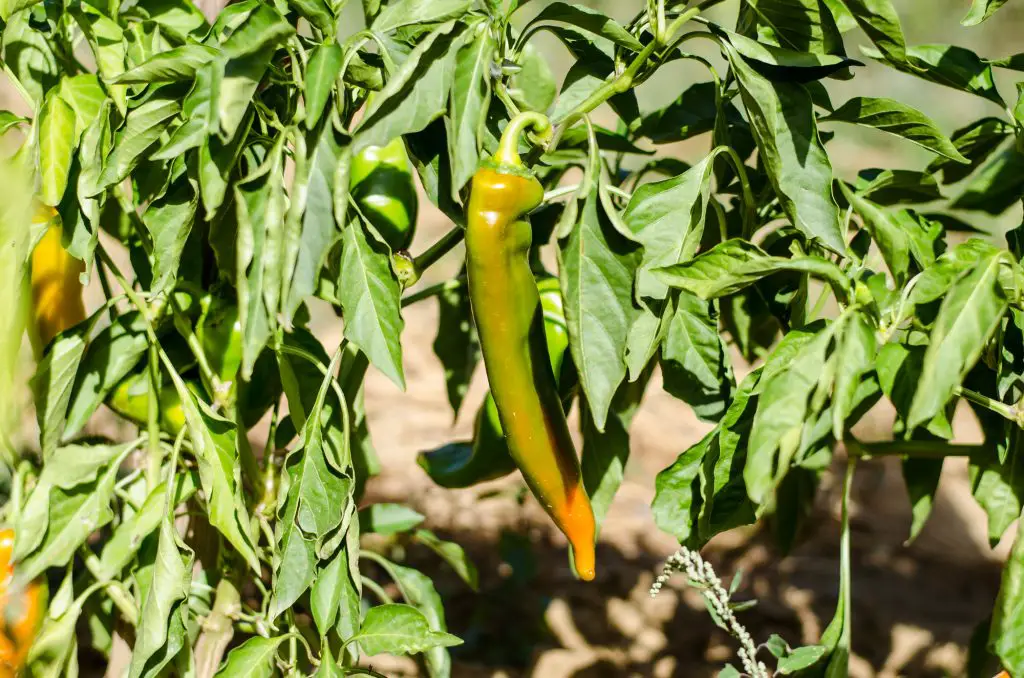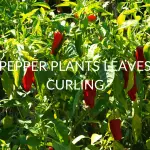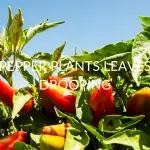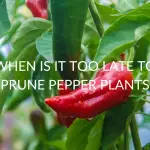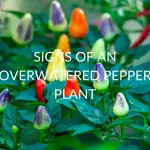Peppers are so juicy and sweet, yet some are very spicy and hot. With all the unique flavors and twists peppers can have, it’s no wonder they’re such a hit for all gardeners, experienced and inexperienced alike. Have you started the hobby of growing pepper plants but have no idea what soil is the best for their growth?
Rich, loamy soil is the best soil choice for your pepper plants. You can get this soil type yourself by raking in your own high-quality, organic compost, being mindful of excess nitrogen as this can negatively affect your pepper plants. Although peppers tend to do best with this soil, they can still grow in all types.
Growing the best tasting and looking peppers always starts from the ground up literally. Without good, healthy soil that’s good for your pepper plants, you won’t be able to grow your best peppers yet. Luckily, this article will aid you in learning all about the soil that pepper plants need to grow in to thrive.
Why Is Soil So Important For Pepper Plants?
Soil is very important to pepper plants for a variety of reasons. From soil fertility, drainage, aeration, sun exposure, pH, and microorganisms, it’s important that pepper plants have the best quality soil that provides for their unique needs. In order for you to grow the very best peppers, you should ensure you cover all your bases when it comes to substrate.
Think of soil as a home for your pepper plant- a home that you cannot observe with the naked eye. Underneath the surface of the dirt, there lies an entire community your plant relies on for healthy growing. Soil has many different components that all contribute to growing healthy or even unhealthy plants.
Pepper Plants Require A Certain pH For Good Growth
Most pepper plants require a specific pH for optimal growing, making the pH of soil an important factor in deciding on which soil to grow in. Your soil will need to be acidic, neutral or alkaline, depending on the species of pepper you grow.
Without adequate pH conditions in your soil, your pepper plants will not thrive the way they could with necessary conditions being met. Being cognizant of what each species of pepper plant requires for soil acidity will help you grow the healthiest plants possible. For example, a sweet pepper plant may not produce very sweet peppers without proper pH.
pH should also be considered as important when we think about beneficial bacteria that live underground. Certain strains of bacteria that aid pepper plants in growing can become susceptible to death if the soil’s pH is altered in a way that the bacteria cannot survive.
Pepper Plants Require Fertile Soil For Good Growth
Pepper plants need a balanced fertilizer applied to them to do their best. If your soil is particularly rich in phosphorus, you should choose a fertilizer that is low in phosphorus to avoid giving your plants too much of the chemical. Growers should also make sure they have enough nitrogen in their soil to ensure good growth, allowing it to produce more chlorophyll.
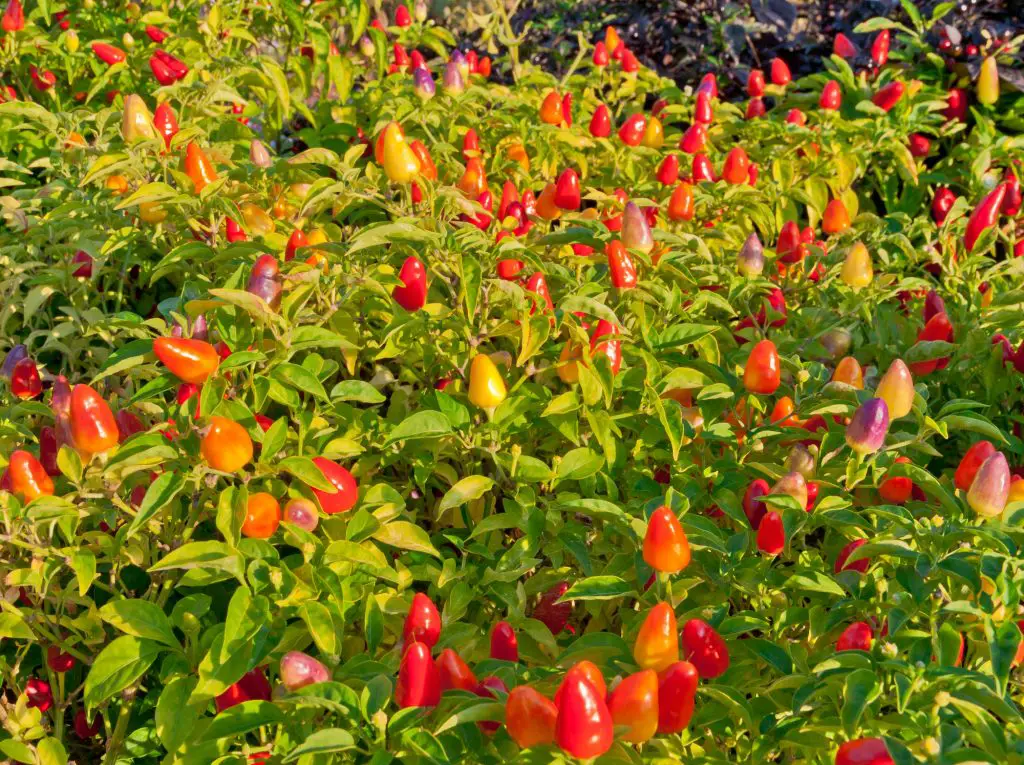
Pepper Plants Require Soil That Is Oxygenated
Pepper plants also require a soil that is oxygenated enough to allow for adequate airflow underneath its roots. If the pepper plant is too compacted within the soil, its growth may not only be stunted, but the plant may fail to produce edible peppers. It is important that soil be oxygenated enough to provide air to plant roots and the bacteria in the soil.
You can increase the amount of oxygen in your soil by adding earthworms to your garden. You should also focus on regularly cultivating your pepper plant plot to be sure to bring oxygen to the deeper layers of soil. Adding volcanic rocks, perlite, vermiculite, and sand to your pepper plant garden will ensure that your dirt gets plenty of oxygen.
Pepper Plants Require Soil That Is Rich In Beneficial Bacteria
Pepper plants, like many other plants, need to have access to soil rich in beneficial bacteria to do its best. This is because bacteria can help defend plants against harmful microorganisms as well as assist them in locating and digesting different minerals and nutrients. Interestingly, bacteria can also colonize pepper plant roots to aid in their growth.
Pepper Plants Require Soil That Is Aerated For Optimal Water Flow
Pepper plants require soil that has enough aeration and drainage in it to allow for adequate water filtration around its roots. Optimal water filtration allows pepper plants to live within a specific soil pH necessary for their growth and also allows for water to successfully reach pepper plant roots.
What Soil Is Best For Pepper Plants?
Rich, loamy soil is what is best for pepper plant growing. Soil that is ideal includes soil that is very fertile, compact with phosphorus, nitrogen, calcium, magnesium, and more. Other minerals that pepper plants need to thrive include:
- Carbon
- Hydrogen
- Oxygen
- Boron
- Calcium
- Chlorine
- Cobalt
- Copper
- Iron
- Molybdenum
- Potassium
- Silicon
- Sodium
- Sulfur
- Vanadium
- Zinc
You won’t have to buy these fertilizer ingredients individually because many companies have a lot of soil products with these minerals already built into them. You can also get these ingredients naturally with leaves, pine needles, and other organic materials.
You can also buy a lot of different soils that are ideal for growing pepper plants. Some options include:
- Pro-Mix Premium Organic Soil
- Fox Farm Happy Frog Organic Soil
- Espoma Organic Garden Soil
- Compressed Organic Garden Soil
- Fox Farm Ocean Organic Soil Mix
- Sun Gro Organic Soil
- Miracle-Gro Garden Soil
- Perfect Soil Organic Soil
- Miracle-Gro All Purpose Soil
- Miracle-Gro Expand’ N Gro Soil
- Sungro Horticulture Black Gold
- Espoma Organic Seed Starter Premium Potting Mix
- Miracle-Gro Indoor Potting Mix
- Fox Farm Happy Frog Potting Soil
- Daddy Pete’s Organic Sandy Loam Top Soil
- Enriched Garden Soil
What Are The Ideal pH Levels For Pepper Plants?
pH is very important when growing the best peppers as it can determine what nutrients are bioavailable to your pepper plants. Soil pH requirements for peppers vary greatly depending on species; here is a list of some peppers and their pH requirements:
Is Potting Soil Good For Pepper Plants?
Potting soil can be ideal for growing peppers if you opt to grow your plant in a container. It is not advised to use garden soil when potting your plants due to bugs and other reasons such as soil compaction and causing root damage. Potting soil allows for proper aeration for your pepper plant, so it is advisable to use this whenever you grow from a container.
How To Make Potting Soil For Pepper Plants
There are a few steps that go into making a high-quality potting soil for successful pepper plant growing. Once you solidify the ratios in your potting soil recipe, you can begin to branch out and experiment with each growing season by tweaking ratios and see how they affect your pepper plant’s growth for better or worse.
Prepare Your Composted Material
To make potting soil for pepper plants, you can begin to compose a mixture of composted organic material that includes a variety of mineral-packed ingredients. This can include compost, rotted manure, chicken manure pellets, forest humus, earthworm castings, vegetable and fruit scraps, bat guano, dolomite lime, mycorrhizal, and beneficial bacteria.
Other composting ingredients you can use for making your own soil include grass clippings (rich in nitrogen), weeds (make weed tea and then distribute it to your plants), tree leaves, coffee grounds, eggshells, banana peels (make banana peel water out of them and distribute the water onto your pepper plants), and (don’t get grossed out) even human urine!
Other fertilizer ideas include:
- Leftover Beer
- Alfalfa Meal
- Cottonseed Meal
- Corn Gluten Meal
- Rock Phosphate
- Cow Manure
- Chicken/Poultry Manure
- Greensand
- Soybean Meal
- Blood Meal
- Bone Meal
- Feather Meal
- Seabird Guano
- Fish Meal
- Fish Emulsion
- Shell Meal
- Liquid Kelp Fertilizer
- Seaweed
- Azomite
- Urea
Whatever you decide to use for your composting material, just be sure to identify each type of fertilizer you choose to add in and its pH and mineral content. This is because you don’t want to add too many different composting items and realize that you’ve caused the pH of your soil to become unfavorable for the species of pepper plant you’re growing.
Gather Some Topsoil
Next, take ¼ mixture of topsoil designed to add some volume to your potting mix and add it to ¼ parts of the composted organic material. This type of soil is not meant to add nutrition to your pepper plants but rather allow your composted material’s life to be prolonged. This will let you use your potting soil more sparingly yet effectively.
Choosing the right topsoil matters, too. You should shoot for buying loose and crumbly sandy loams in dark brown hues- an indicator of healthy organic material. You should also be sure that your topsoil has been decontaminated and that no large pieces of debris are in the soil, such as large roots, rocks, and weeds have been removed.
Get Proper Materials For Soil Drainage
Now, gather ¼ of the substrate meant to be used for soil drainage, such as perlite, vermiculite, or sand. This will allow your pepper plant’s roots to have access to oxygen as well as improve the water flow near your pepper’s root system. Add this drainage substrate to the other parts you’ve already gathered.
Other ways to aid the drainage of your soil can be to incorporate organic matter into it, as it will improve soil aggregation and allow for different sizes of pores. You should also focus on improving the microbial diversity of your soil by introducing a variety of fertilizers, organic material, and plants, not just pepper plants.
Choose A Medium For Retaining Nutrients And Water
Finally, choose some soil medium that can help your pepper plants retain water and nutrients. This will aid your pepper plants in growing as healthy as possible by improving the soil’s ability to retain nutrients. Add ¼ of this mixture to the rest of the parts you prepared earlier, mixing well. Try to keep your potting soil fluffy and loose, not compact.
Be Mindful Of Your pH
To make the best quality potting soil for your pepper plants, you will also have to keep in mind what pH your pepper plant likes best. As mentioned earlier, many pepper species differ in what soil pH they require to thrive. To amend soil in order to alter its acidity, you can add different ingredients such as:
- Elemental Sulfur (To increase acidity)
- Aluminum Sulfate (To increase acidity)
- Ground Agricultural Limestone (To increase alkalinity)
- Baking Soda (To increase alkalinity)
- Sulfuric Acid (To increase acidity)
How Much Soil Do Pepper Plants Need?
Pepper plants require a specific amount of soil in order to grow their best. In general, most pepper plants need approximately 3-5 gallons of soil to produce a good amount of healthy peppers. The plant should be able to reach down into the soil about 18-24”. Small species of peppers can grow in 2-gallon pots, but larger species require at least 5-gallon.
Some sources say that your pot should be around 12” wide and 10” deep. However, it is commonly known that larger pepper plants will need pots much deeper (at least 18” deep). Exactly how much soil you’ll need for your pepper plant really is determined by how big your pepper plant will grow during its lifetime.
Recap
Healthy, loamy, fluffy, nutritious soil is a crucial part of successful pepper plant growing. Peppers also require certain conditions regarding how much soil they should be planted in, and their needs differ depending on their species. Homemade potting mix for your peppers can be made easily at home, and amending the soil to make it an appropriate pH for your pepper plant is simple with all the choices to raise/lower soil pH. Potting soil is considered healthy for pepper plants, even though homemade potting soil can mimic the same benefits.

